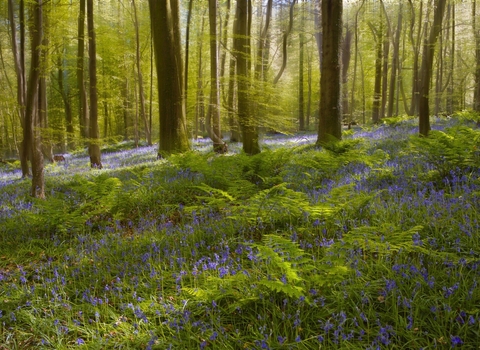Why are our many of our woodland wildflowers going extinct, when our woodland cover has increased from below 1% to nearly 10% in 150 years? Its all about traditional management. Woodlands are much darker than they used to be because our native oak and hazel trees have made way for deeply shading conifers and ornamental trees.The Woodlands for Wildflowers project is the creation of a refuge for these woodland wildflowers.
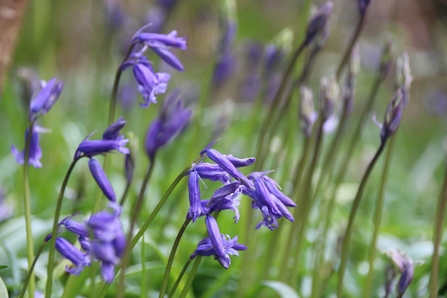
A Cycle of Light and Dark
In Victorian Manx glens mining operations and tourism competed with traditional woodland management which, in the 18th century, saw the need for vast quantities of hazel sticks used for spitting herrings. To create these sticks hazel are cut down every 6-10 years. They re-sprout very quickly after cutting to create a sustainable, traditional managed woodland (called coppicing). This traditional management creates areas that are very shady for a few years and then bright and sunny for a few years as the cycle repeats.
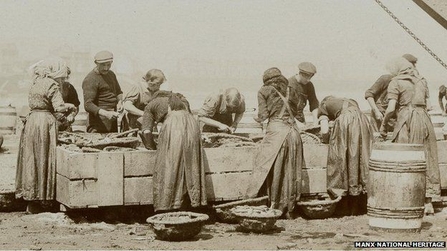
'Herring Girls' pictured processing herring ~1940. ©Manx National Heritage
By the start of the 20th Century the tourist industry had won out and glens planted with heavily shading trees like beech and fir. Some woodland plants, like bluebells and wild garlic, thrive in this shade but many others, especially woodland sedges and grasses, slowly peter out. As these traditionally managed woodlands were always rare on the Island the wildflowers within them were always uncommon, and so the pathway to Island extinction can be abrupt.
Most of the rare woodland plants also need mineral-rich, valley-bottom soils with some needing wetter sites. When these plants get the conditions they need, many can spread rapidly by seed or underground roots. This is why the cycle of light and dark suits them so well as the dark shady period removes all the competitive plants and they have 2-3 years with very little competition after an area has been cut.
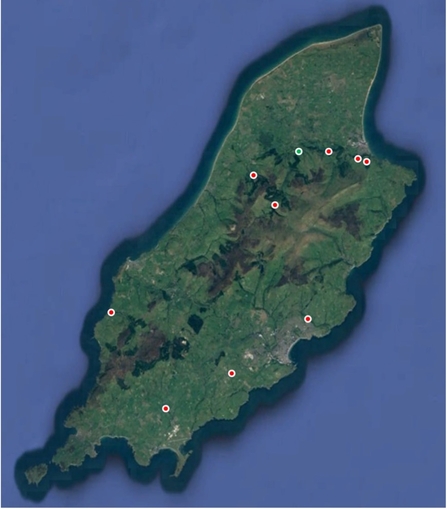
Wood Melick has gone from ten historical woodland sites to just one (the green dot at Narradale). It is barely clinging on here at the base of a waterfall.
In a traditionally managed hazel woodland the best management cycle is about seven years. By cutting a seventh of a woodland area each year there will always be areas of light and shade. Woodland trails connect these areas.
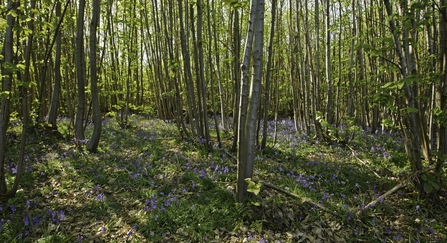
Chestnut and hazel coppice showing the amount of light available compared to the woodlands and glens we see today with mature, big canopy trees - Terry Whittaker/2020VISION
Creating Woodlands for Wildflowers
It was clear at the start of this project that none of the original hazel woodland sites could be restored and returned to managed woodland. Most are now National Glens with mature trees and are treasured by everyone. The few that are not National Glens are too remote for ongoing traditional management to be viable. We needed to create a new site from scratch, and it took us eight years from 2008 to get our site.
Hazel planted in 2016 at the Crossags coppice site.
In 2016 MWT acquired the four-acre Crossags Coppice, a bracken and gorse covered hillside area above Ramsey. A hazel dominated native woodland was planted and is establishing rapidly but it is still several years away from completing its ‘dark’ phase and shading out the competing vegetation. We have also started to establish another three acres in Claughbane Plantation where there is a concentration of natural, mineral-rich, springs.
The same hazel in 2019, showing growth but still in the 'light' phase,
Introductions of ten rare woodland wildflowers began in 2016. Some are slow to establish, but others have already spread rapidly. The Woodland Ark is just waiting for the cycle of dark to complete so we can start managing the site to initiate the first ‘light cycle’ where the rare wildflowers can start to proliferate.

Rare woodland plants that have been transplanted as part of this project. L-R Wood Speedwell, Wood Melick, Woodruff.
Socks and Shoes for Wildflowers
Woodland wildflowers spread very slowly as seed normally falls just a few cm from the mother plant. In wilderness conditions animals like deer would catch seeds in their hooves and inadvertently spread them up and down natural game trails. Our trainers and footpaths act in the same way as hooves and game trails. The more people walk past rare wildflowers, the more likely they are to spread them round the woodland, or even to a new woodland.
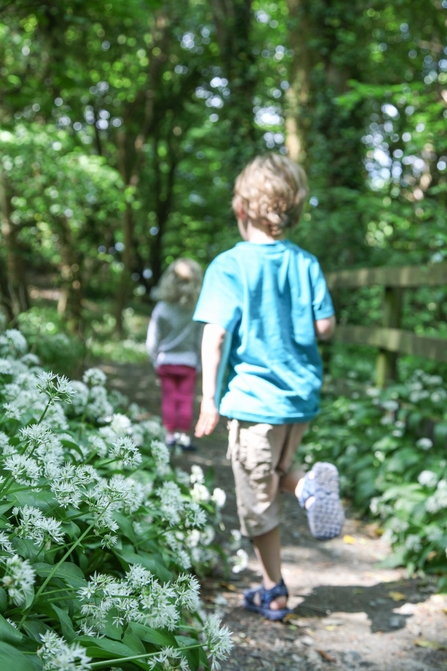
What happens after?
Woodlands for Wildflowers is a short and medium-term plan. In the long-term we need larger areas of a new type of woodland. This is a woodland where animals graze the open woodland where light reaches the floor. In these woodlands we do not need the traditional management techniques, we need a natural approach that combines the best in woodland and farmland.
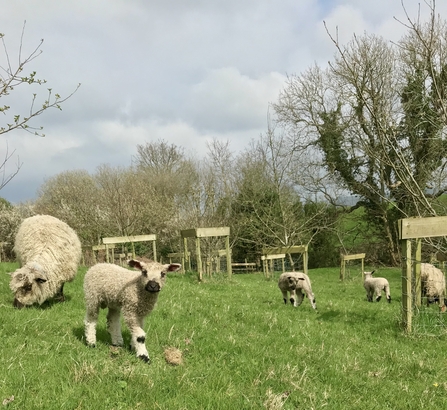
What can you do?
There is an opportunity to sponsor this project, find out more here!
Project Partners


